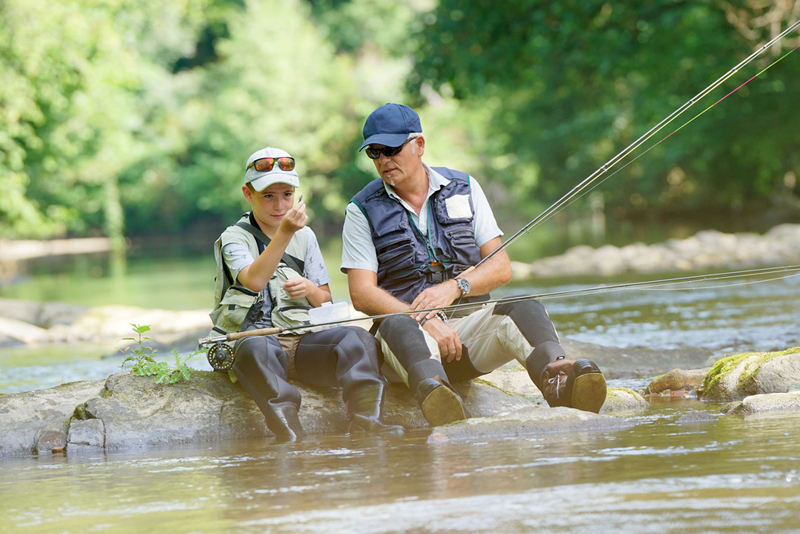
In the world of fishing enthusiasts, how to fly fish is not just an activity; it's a refined pleasure, allowing you to enjoy serene moments and connect intimately with nature in the summer. You'll experience the joy of fishing with a diverse range of fish species by using various artificial flies. Let's explore the wonderful world of fly fishing this summer and fully embrace the excitement it brings.
What is fly fishing? Why is it called fly fishing?
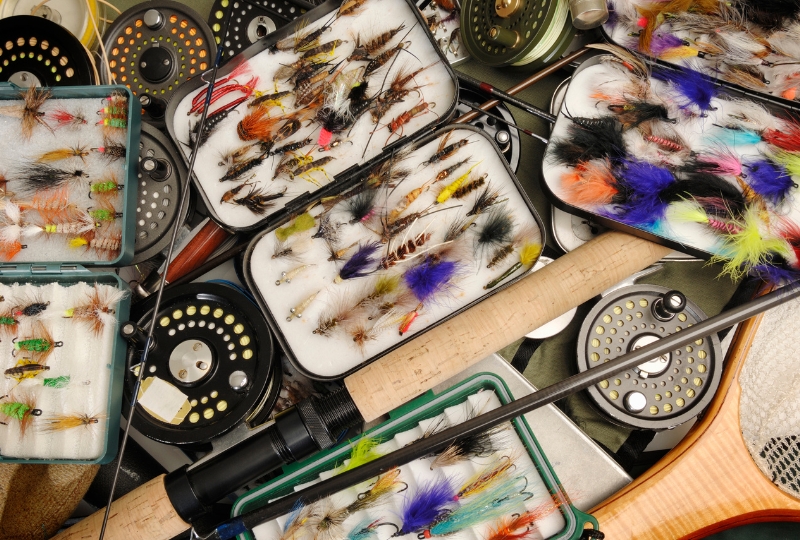
Fly fishing derives its name from the artificial flies used by anglers. These flies are crafted to mimic small insects, like flies, to entice fish to bite. Typically made from materials such as thread, yarn, feathers, fur, and hooks, these flies come in various sizes.
Although it has existed for centuries, fly fishing truly gained popularity in Europe during the 15th century, especially among the English aristocracy, where it was regarded as an elegant and prestigious sport. Initially a pastime for the wealthy, by the 19th century, this practice had spread and become a favorite among the middle class as well.
Fly Fishing in Hokkaido
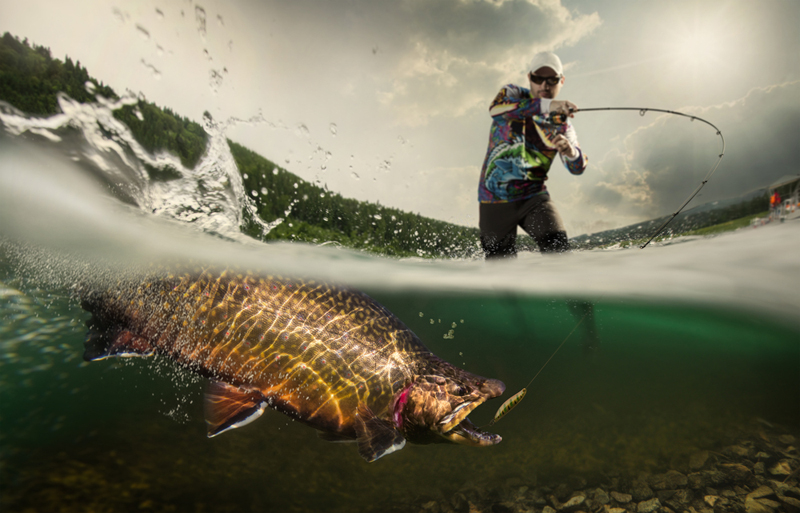
For avid anglers, finding the perfect location to indulge in this conquering hobby is paramount. With its untouched beauty and immersion in the stunning nature of Japan, Hokkaido has become an ideal destination for fly fishing. The island's clear rivers and pristine lakes, accompanied by the soothing sounds of babbling brooks and the sight of fish swimming in the water, provide a relaxing and exhilarating experience for anglers.
Moreover, Hokkaido is renowned for its diverse range of fish, offering exciting fishing experiences. Hokkaido, located in the northernmost part of Japan, is the country's second-largest island after Honshu, yet it has a population of only about 5 million people, with nearly 2 million residing in Sapporo. This underscores the island's wild nature.
Given all these attributes, it's easy to see why this island remains largely untamed, with its mountains and numerous rivers teeming with wild fish. The lush greenery and expansive national parks also draw many visitors. However, it is the richness and diversity of the fish species that truly attract people to the magnificent island of Hokkaido.
How to fly fish
We'll share a simple guide to help you get started with fly fishing easily and encourage you to explore the excitement of this outdoor activity.
How to fly fish Step 1: Prepare your clothing and fishing gear

You don't need too much equipment to get started. Polarized sunglasses will protect your eyes and help you see clearly while fishing. A rod, a reel, a leader, a net, and a few artificial flies are sufficient. You might also consider rubber boots or wading shoes for added comfort.
Choose the size and length of the rod suitable for the waters you will be fishing in. Select the fishing line based on the predatory habits of the fish you are targeting. There are two types of lines: one made from nylon, coated with plastic and infused with air bubbles to help it float, and another that absorbs water and sinks.
Step 2: Casting the line
Casting the line is simple and not complicated. Use the technique of casting the rod forward to extend the fishing line and place the artificial fly in the desired position.
Step 3: Handling a Catch
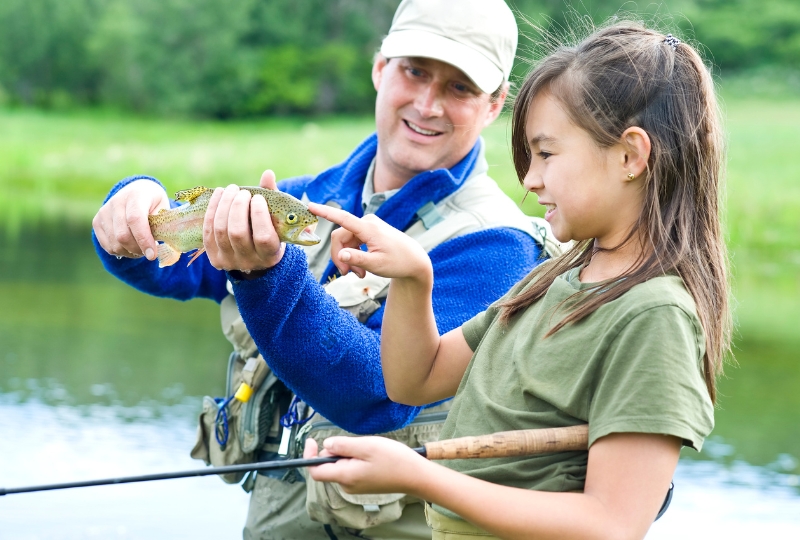
Where Fish Tend to Live Understanding where fish typically reside is crucial for selecting an effective fishing spot. Fish instincts are driven by their need for food and a sense of safety from predators. You can often find fish in areas that offer both, such as around and behind logs, along rocky riverbanks, and in shaded spots near and around large rocks.
When you've caught a fish, ensuring it doesn't escape requires specific techniques. A good reel with sufficient drag, a tight knot, and a sharp hook are essential elements. Guide the fish away from fast-moving water.
If the fish is swimming upstream, keep your rod pointed downstream, almost parallel to the water surface, and apply pressure in the opposite direction of where the fish wants to swim. This will tire the fish out without needing to pull too hard or exert excessive pressure.
Tip for casting
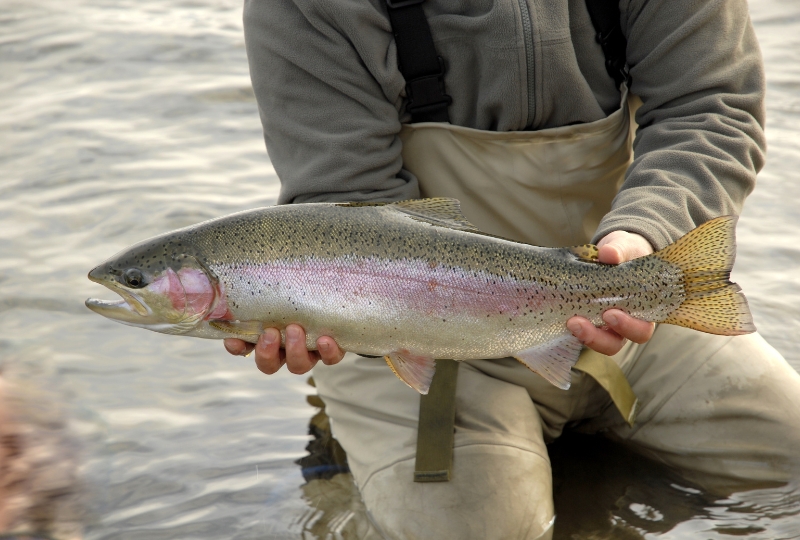
When fly fishing, there are several tips and techniques you can apply to increase your chances of catching fish successfully:
• Choose suitable bait: Select artificial flies that are appropriate for the fish species and environmental conditions. Try to mimic the insects that fish are feeding on in that area.
• Vary casting techniques: Experiment with different casting techniques such as overhead cast, roll cast, reach cast to find the most suitable technique for the water conditions and fishing space.
• Pay attention to depth: Adjust the depth of the artificial fly by using different fishing lines or adding weight to the fly to reach the water area where fish usually thrive.
• Observe and react: Carefully observe the status of whether the fish has taken the bait or not, to adjust fishing techniques and artificial flies flexibly.
• Move frequently: Change fishing spots and move around the water area to search for locations where fish are more active.
• Keep flies clean: Always keep artificial flies clean and carefully store them after each use.
How is fly fishing different from traditional fishing?
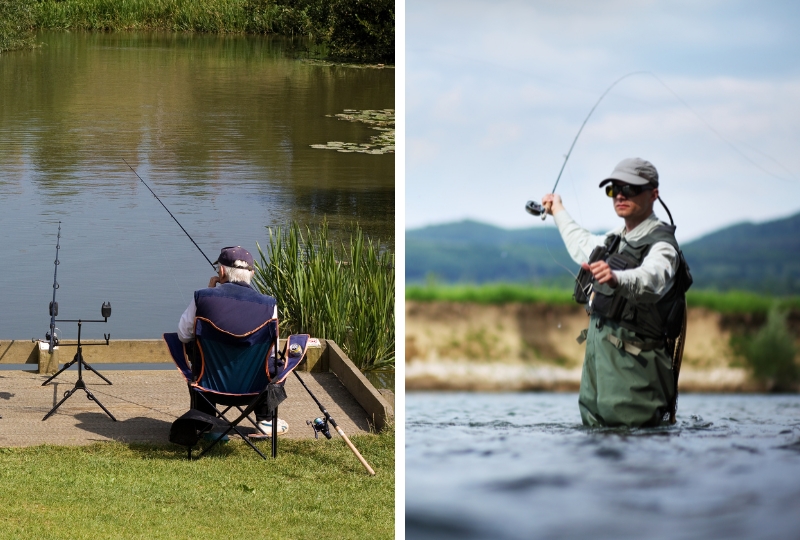
Fly fishing and traditional fishing differ in several aspects:
• Bait: In traditional fishing, live bait or artificial bait is used on the fishing rod to attract fish. In contrast, in fly fishing, artificial flies made from materials such as feathers, foam, and fibers are used to mimic the insects that fish like to eat.
• Casting techniques: In traditional fishing, you often directly cast the bait into the water and wait for fish to bite, whereas, in fly fishing, you typically use special casting techniques such as overhead cast or roll cast to propel the artificial fly out into the water, mimicking the way insects fall onto the water.
• Equipment: In traditional fishing, long fishing rods and specialized fishing lines are used to cast the bait far. In fly fishing, rods designed to perform special casting techniques and fly lines are used.
• Target and fishing style: In traditional fishing, the target is often larger fish and techniques such as bait fishing are used to attract them. In contrast, in fly fishing, the target is often smaller or predatory fish such as trout, and anglers often employ more intricate and hands-on casting techniques.
These differences result in different approaches and experiences for anglers.
Where to Fish?
Lake Kussharo is an ideal spot for fishing enthusiasts. According to Hiro & Noki bum around the world, it is Japan's largest caldera lake and the second-largest in the world, with a circumference of about 35 miles. Located in eastern Hokkaido, the nutrient-rich volcanic waters support a variety of large fish, making it a world-class fishing destination.
Lake Akan is surrounded by pristine nature and is home to many native trout species, making it a favorite among fly fishing aficionados. Fishing is prohibited until April 30 each year to protect the fish populations, but from May 1 to the autumn season, it becomes a paradise for anglers. There is a fishing fee of 1,500 JPY per day, payable in advance.
Lake Shikaribetsu, the only lake in Daisetsuzan National Park, was formed by volcanic activity. The lake's shores are surrounded by ancient primary forests, offering a glimpse of untouched nature. The circumference of Lake Shikaribetsu is about 16 kilometers.
The experience of fly fishing is not just an elegant pastime but also a fantastic way to relax in nature. It's not just about catching fish; it's an opportunity to connect with nature and enjoy serene moments. Crafting and selecting artificial flies are also part of the experience, adding creativity and excitement. Whether you're a beginner or an expert angler, fly fishing offers unique and enjoyable experiences that you shouldn't miss out on. Let yourself be immersed in the melody of flowing water, feel the rhythm of nature, and enjoy the pleasure of fly fishing - a wonderful hobby amidst the majestic outdoors.
Source: The Fly Crate






